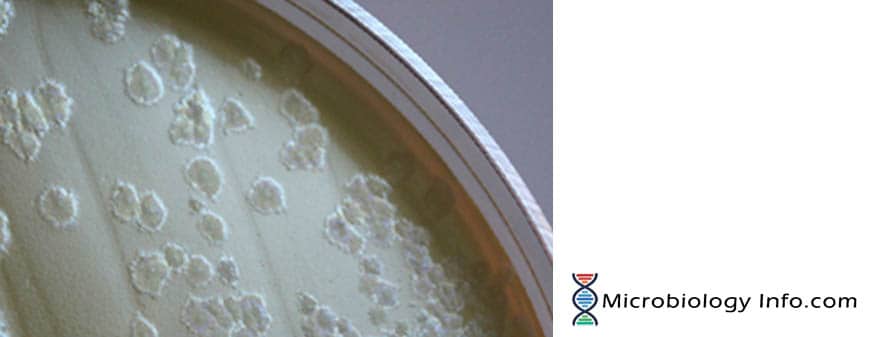Lipid is the general term used to describe all types of fats. Fats are formed by ester linkage between three molecules of fatty acids and one molecule of glycerol. Simple fats are known as triglycerides or triacylglycerols.
Triglycerides are composed of glycerol and three long chain fatty acids. Enzymes that break simple fat into its component fatty acid and glycerol are known as lipase.
Some microorganisms possess the enzyme lipase. Thus they can be classified based on their ability to produce and secrete lipases. A variety of simple fats can be used for this determination, depending on the type of organism being tested.
Objectives
- To determine the ability of microorganisms to produce the enzyme lipase.
- To identify the bacteria on the basis of its lipase activity
Principle
Egg Yolk Agar is a differential and enriched medium used in the isolation and presumptive differentiation of different species based on their lipase activity among others.
The non-selective medium supplemented with a suspension of egg yolk, supplies lecithin and free fats, substrates needed to detect lecithinase and lipase production and proteolytic activity.
Microorganisms that possess the enzyme lipase hydrolyze the free fats present in the medium to form glycerol and free fatty acids. Consequently, the release of insoluble free fatty acids results in the formation of an iridescent sheen (oil on water) that can be seen when the plate is held at an angle to a light source. Since lipase is not very diffusible, it produces a reaction only on the surface of the agar in the immediate vicinity of the colony.
Media: Egg Yolk Agar
Composition:
Pancreatic Digest of Casein 15.0gm, Vitamin K 1 10.0gm , Sodium Chloride 5.0gm, Papaic Digest of Soybean Meal 5.0gm, Yeast Extract 5.0gm, L-Cystine 0.4gm, Hemin 5.0gm, Egg Yolk Emulsion 100.0ml, Agar 20.0gm
Final pH 7.0 +/- 0.3 at 25ºC.
Procedure
- Take a loopful of test organism and streak it as a straight line on the plate.
- Incubate anaerobically in a gas pak jar immediately after streaking and transfer into the incubator maintained at 35-37oC for 24-48 hours for anaerobes and for aerobes incubate the plate at 35-37oC for 24-48 hours.
- Examine the plate for the formation of an iridescent sheen.
Results
- Positive test: A positive lipase test is noted by the appearance of an iridescent sheen (oil on water) immediately around colonies that can be seen when the plate is held at an angle to a light source.
- Negative test: A negative lipase test is indicated by the absence of an iridescent sheen.
Clostridium sporogenes. Lipase positive; iridescent sheen on agar surface when plate is held at an angle to the light source/
Uses
- The lipase test is used to detect and enumerate lipolytic bacteria, especially in high-fat dairy products.
- A variety of other lipid substrates, including corn oil, olive oil, and soybean oil, are used to detect differential characteristics among members of Enterobacteriaceae, Clostridium, Staphylococcus, and Neisseria.
- Several fungal species also demonstrate lipolytic ability.
Limitations
- It is recommended that biochemical, immunological, molecular, or mass spectrometry testing be performed on colonies from pure culture for complete identification.
- Some microorganisms may require up to one week producing a positive lipase reaction.
References
- Tille, P. M., & Forbes, B. A. (2014). Bailey & Scott’s diagnostic microbiology (Thirteenth edition.). St. Louis, Missouri: Elsevier.
- Cappuccino J.G. and Sherman N. 2008. Microbiology: A Laboratory Manual, 8th ed. Pearson Benjamin Cummings, San Francisco, CA, USA.
- https://catalog.hardydiagnostics.com/cp_prod/Content/hugo/EggYolkAgarModified.html
- >https://www.hccfl.edu/media/686470/lipase%20test.pdf
- https://himedialabs.com/TD/M808.pdf

